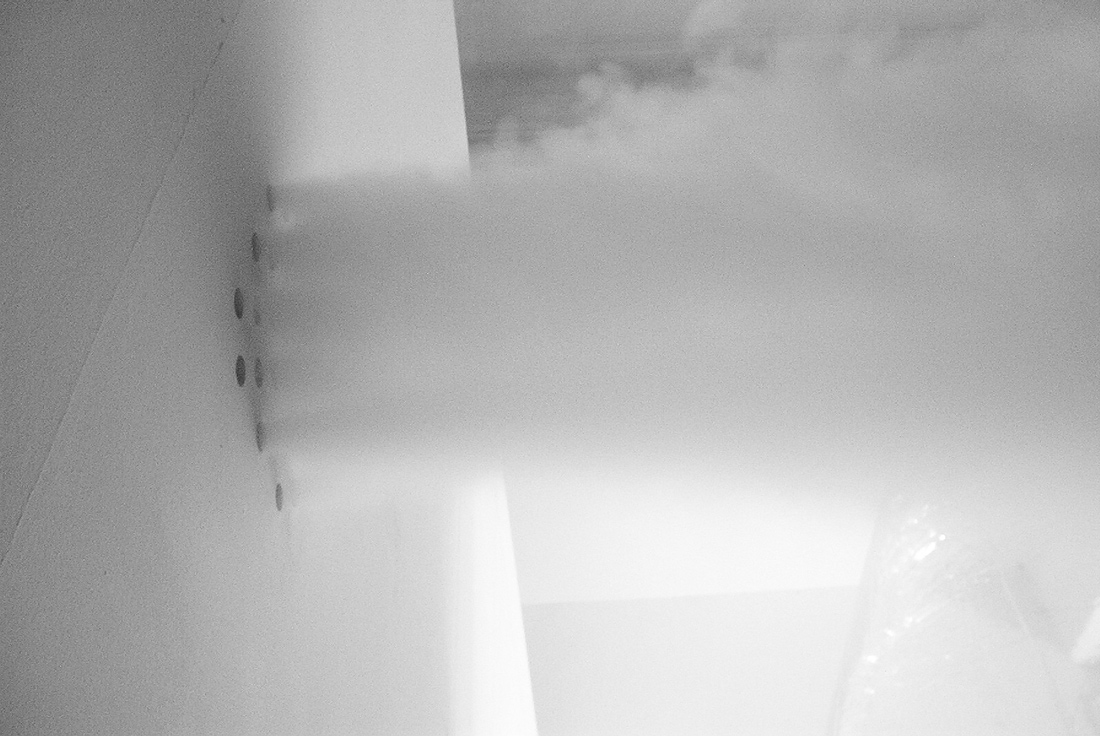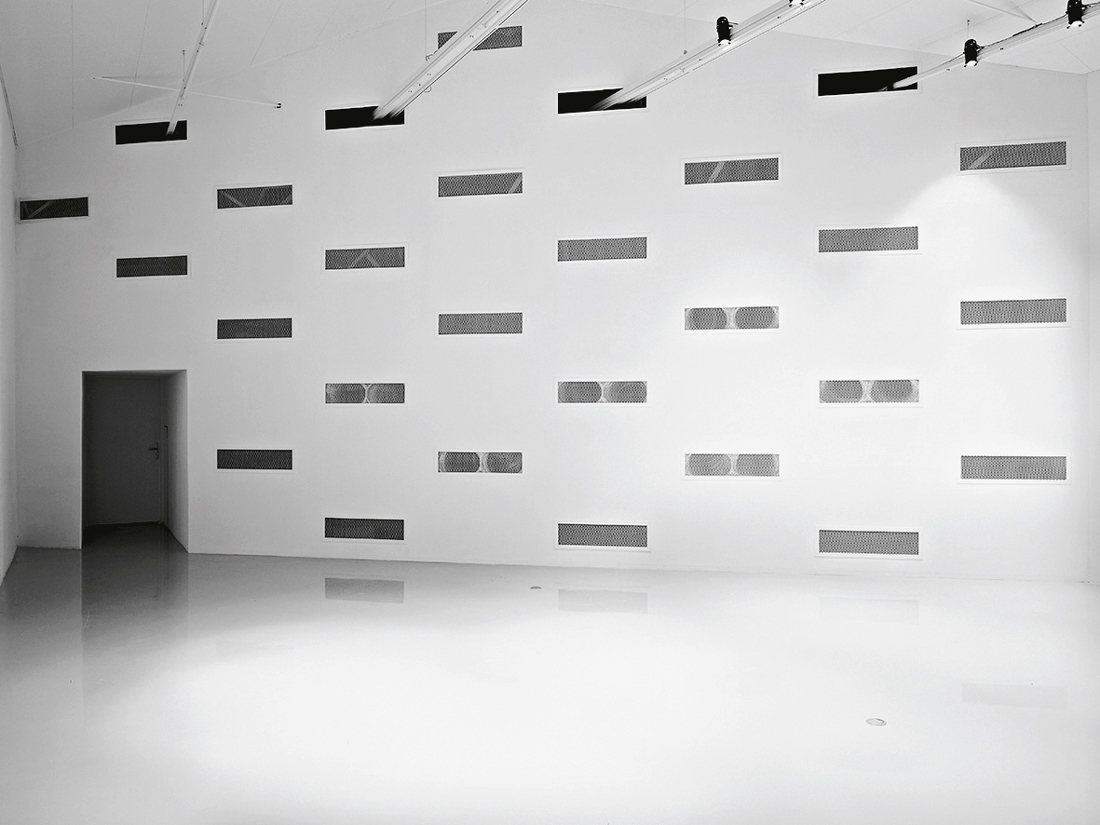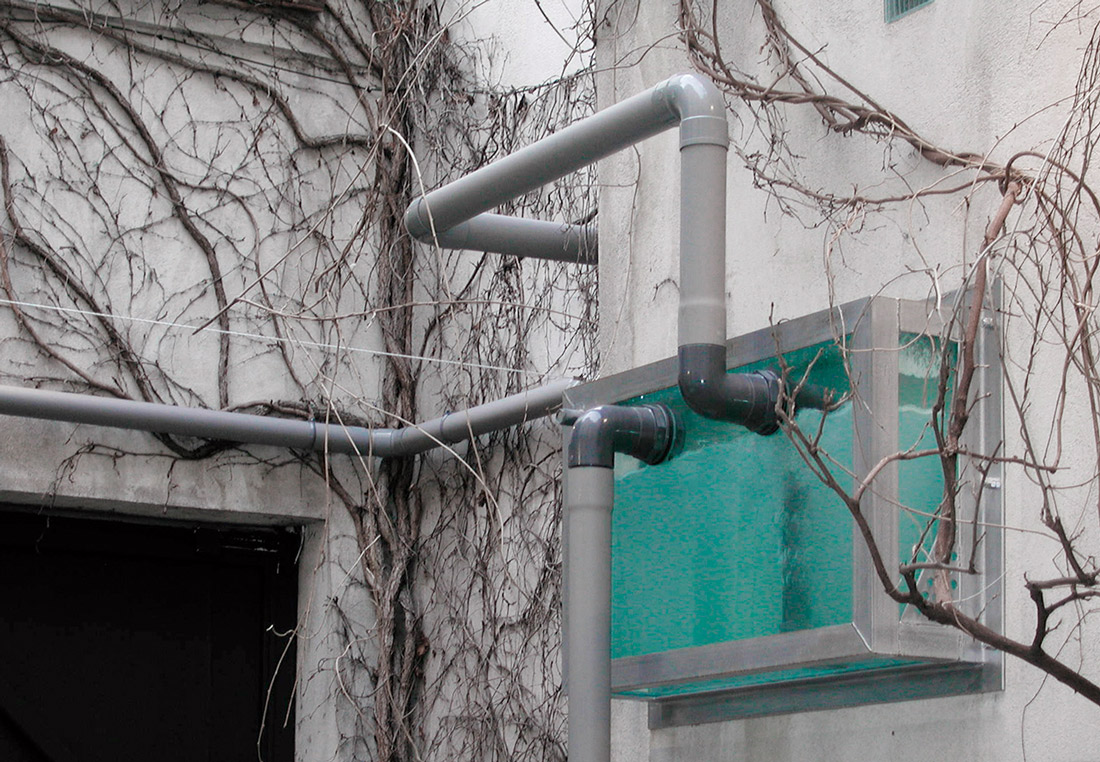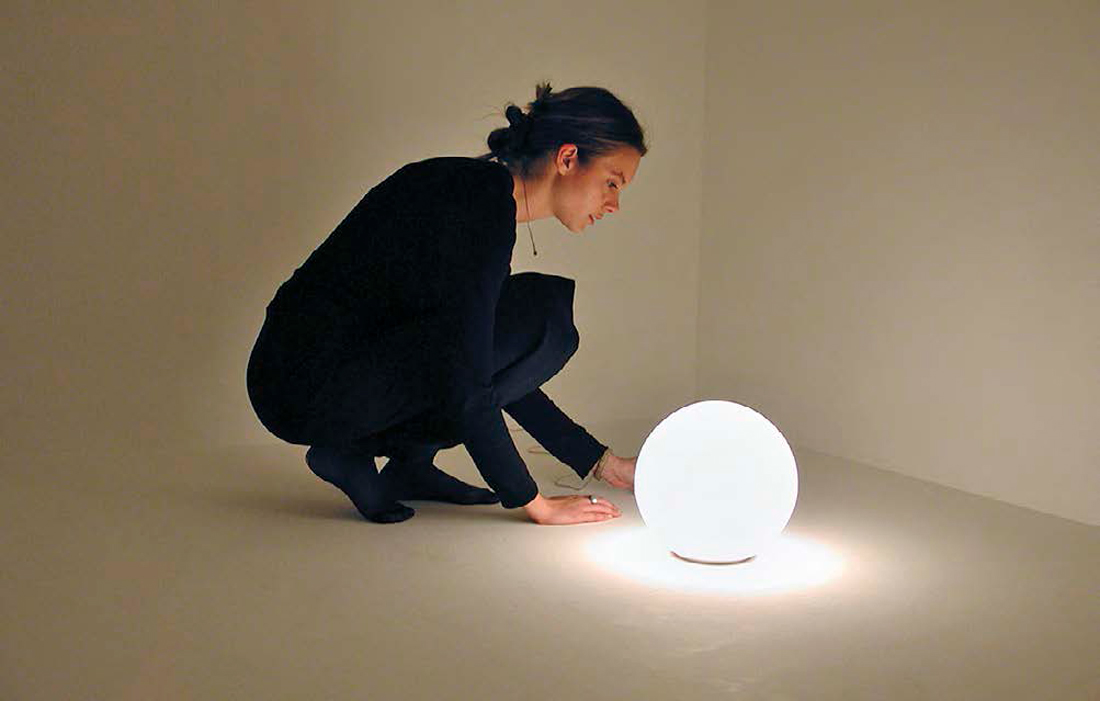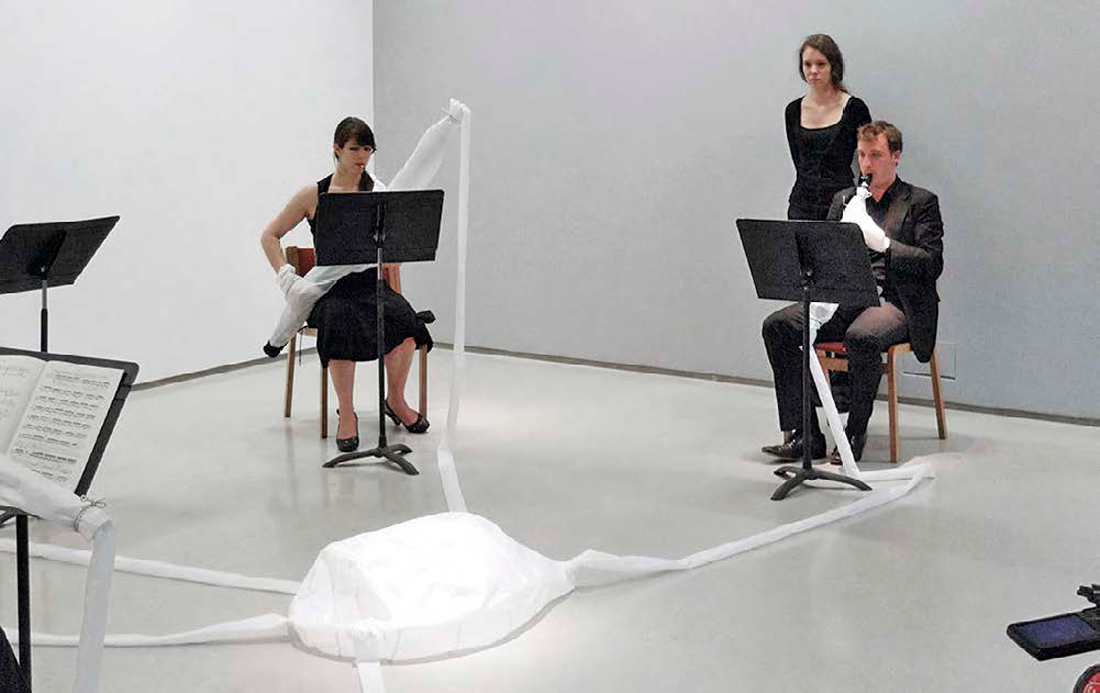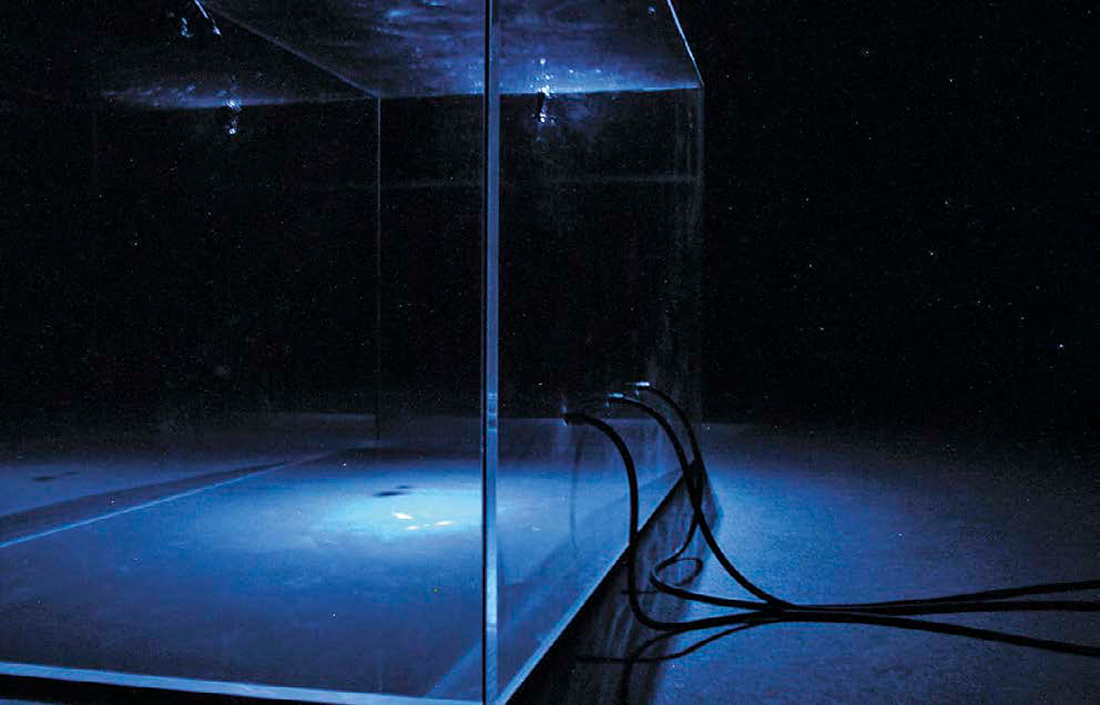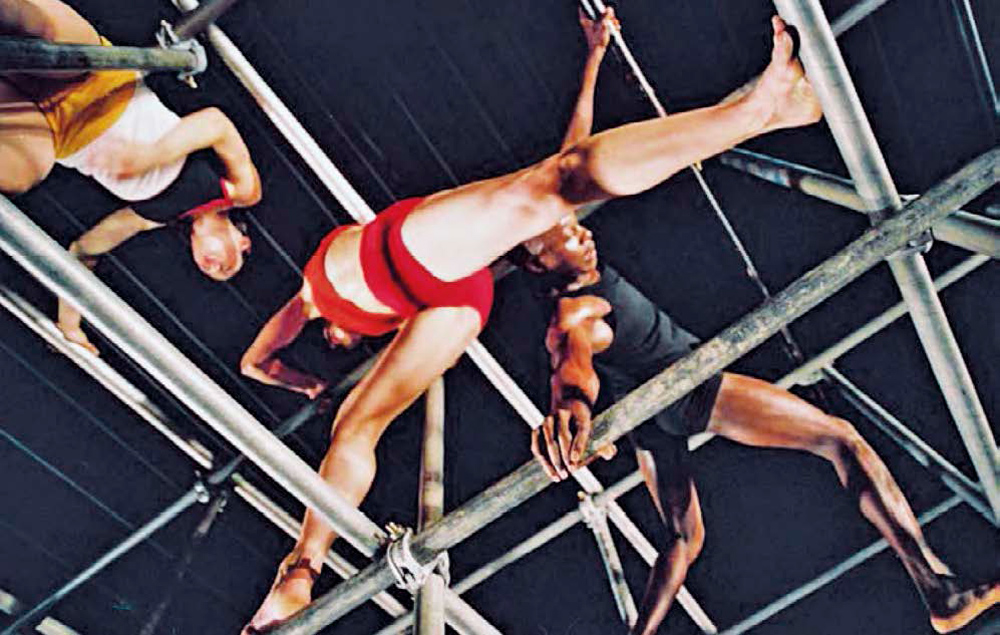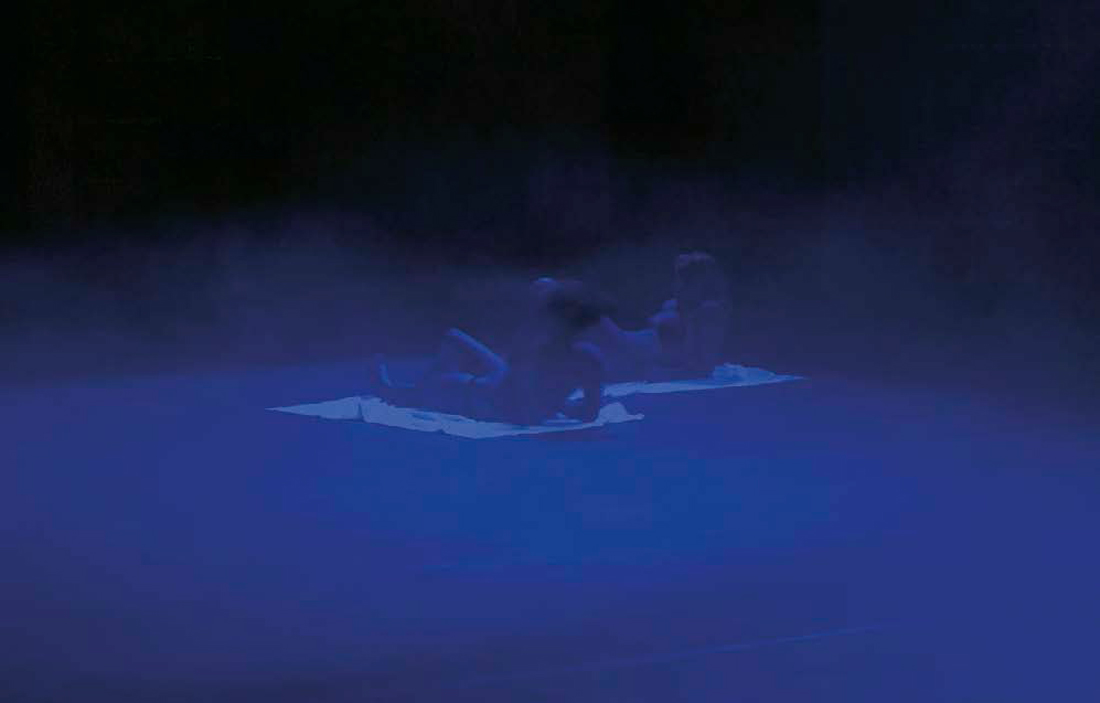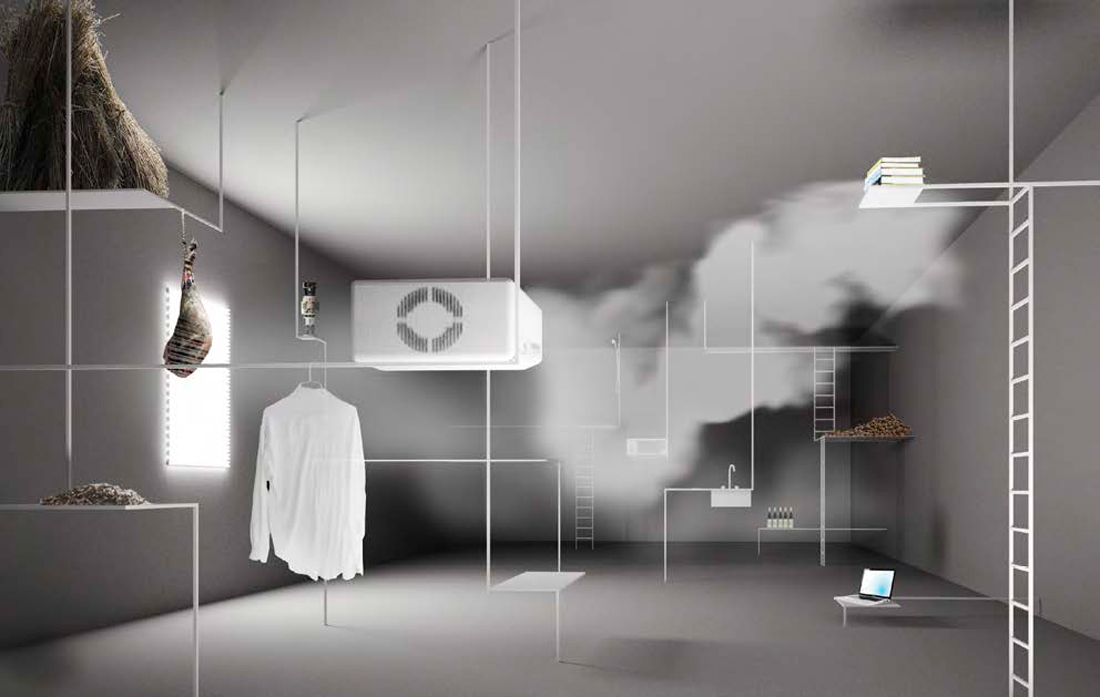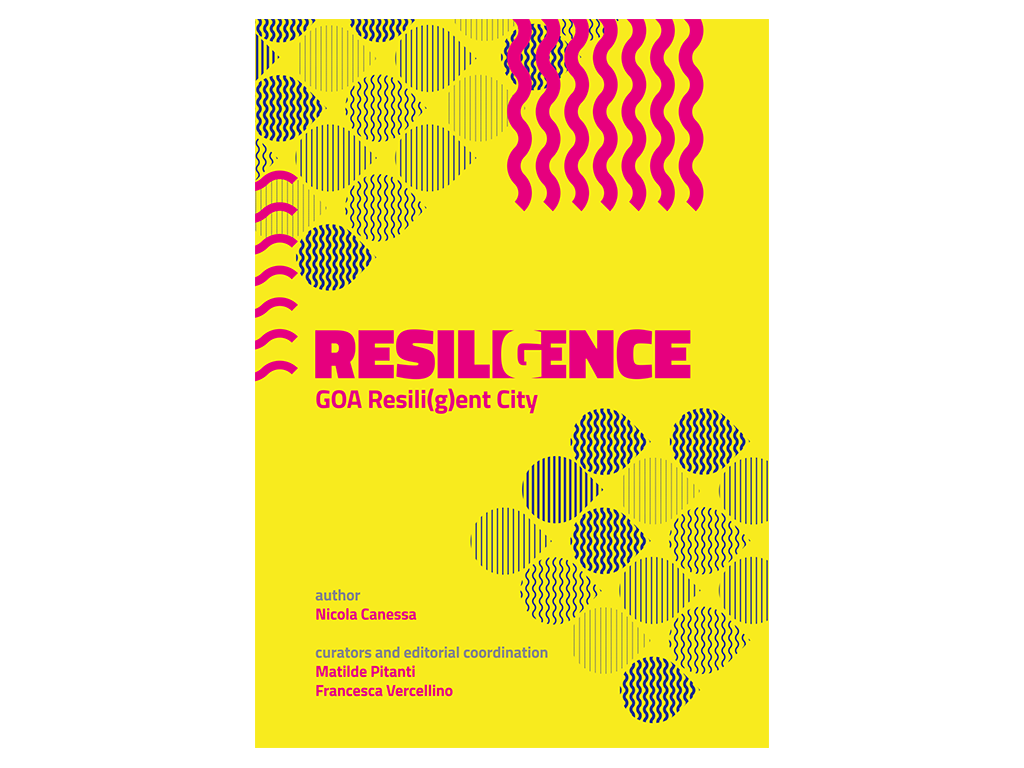Paradise now!
Paradise now! is the project of an ineffable space. Without matter or any other physical limit than smell, the project develops in space, or more precisely develops a space as a meteorological modification of the atmosphere, which takes its real forms in the proteins of the ciliary membrane, in the abstraction of the nervous system. Musk, aloe, rayhan, milk, honey, wine as fragrances of the paradise of Islam, with touches of Christian paradise: incense, Judean balm.
The International 3, Manchester, UK, 2005
Foehn – Föhn
“Foehn” questions the nature of indoor ventilation by proposing the creation by mechanical ventilation of a 60 km/h air current, with an upper temperature of 8ÅãC and a decrease in relative humidity of 17% as an indoor simulation of the “foehn”, the famous wind “that drives people crazy”. Insomnia, headaches, restlessness, the foehn is said to create tension, make one impulsive, darker, exacerbate libido and drive one to insanity. What really happens is that the foehn appears when the warm air masses from the south meet the southern face of the Italian Alps, cooling as they rise. The air caresses the granite mountains, reaches the ridge at the top, then as it descends toward Switzerland, it is compressed before heating again, quickly moving away from dew point. This makes the air very dry and clear, very powerful, charged with positive ions. After several days, there is great relief when the foehn finally calms, when the humidity of the air rises and the air cools and becomes electrically negative again, allowing one to breathe more easily, to release the tension, so Alpine mythology has it.
Frac Lorraine, Metz, France, 2005
Absinth‘Air
Absinth ‘Air is a climate system that connects to the inlet of a ventilation or air-conditioning system. At the Swiss Cultural Center, it operates according to the principle of the hookah, forcing fresh air coming from the outside through a liquid volume of absinthe, harvested and distilled in the Val-de-Travers, to fill it with perfume and alcohol. This absinthe-conditioned air is then fed into the center’s exhibition halls. The visitors perceive this intervention through the vapor, by breathing in the perfume, the aroma, with each breath, through the alcohol, testifying to ancient cultural relations between Switzerland and France, where the distillation of Swiss absinthe plants intoxicated Parisian artists of the bohemian era and cursed poets.
Swiss Cultural Center, Paris, France, 2003 (D.costerd & Rahm, associ.s)
Placebo Paint
It is scientifically conceivable that a room painted in a soporific placebo, a paint containing a homeopathic dose of orange blossom, for example, would induce a person to rest, whether they are consciously or unconsciously convinced it secretes an endo-hypnotic. Similarly, a room decorated in an aphrodisiac placebo, such as ginger, would improve sexual performance by increasing the secretion of endorphins, precisely the substances of ecstasy. By incorporating an infinitely small quantity of ginger or orange blossom into industrial white paint, we seek to designate the use made of a room in a way other than by visual or plastic representation. Our goal is to act at a pre-sensory level, in order to create a kind of sub-functionalist architecture, generating its forms within the neurological and endocrine area of the brain.
Mus.e d’Art Moderne de la Ville de Paris, France, 2001(D.costerd & Rahm, associ.s, with the group AIR – J-B Dunckel – N. Godin)
Pulmonary Space
Can wind instruments transmit the influenza virus? Can we feel the moisture of a singer’s breath, which rises into the air when the choir sings louder? Do we inhale the breath emitted by the trumpeter? What part of music is chemical? Would music, with its waves, its physical impressions on the air and the distillation of vapor, not begin to take on an architectural form? An invisible yet perfectly audible form. What if we accept that music is not abstract but actually produces a volumetric space? Could we not finally accept, for once and for all, that music is not an immaterial void but rather a material void, however light and impalpable it may be, but above all moist, dense, physical and chemical? Music becomes viscous, fetid, moist, exhaled from the lungs and in turn inhaled. The spaces take on a form of architectural breathing in which the audience is immersed. Music is no longer simply heard but breathed and inhaled, constructing its own space.
Barbican Art Gallery, London, UK, 2009
Deterritorialized Terroirs
The aim of the project is to recreate a specific environment (the terroir) in an interior by using contemporary energy-saving techniques, dual-flow ventilation with heat recovery, optimized heating and energy-saving lights. The chemical, electromagnetic, physical, atmospheric and geological properties of a specific external microregion are reconstructed within an interior, reproducing a specific type of soil, a climate, exposure to the sun, smells, specific air movements, making a de-territorialized, a-territorial, domestic terroir. The heating involves different types of limestone, quarried in the Paris basin. The ventilation is rendered by a precise, homothetically reduced composition of plants and trees present in the Paris basin, oak and chestnut, but also pine and beech, which will produce the air fragrances, while glass, polyethylene and stainless steel are chemically neutral components in the architectural composition of the living space.
Carte blanche, VIA, Paris, 2009. Photo: A. Dupuis/ VIA
ND Cult
ND CULT is an artificial space defined by its atmosphere, at an altitude of 10,000 meters, in which the air’s oxygen component is as low as 6%. It proposes a space on the verge of death, where our perception and our consciousness are modified with an intensity in all likelihood verging on mystical states. This space is a spatial reproduction of what the body experiences at the time of death, those few seconds during which the brain is deprived of oxygen during cardiac arrest. The reduced oxygenation of the brain at the time of death can be compared to an extremely rapid rise in altitude. The lack of oxygen, known as hypoxia, creates highly intense physiological responses. Hallucinations are common among mountaineers who climb to altitudes above 6,000 meters without oxygen. These symptoms of severe hypoxia occurring at very high altitudes are very similar to those reported by people who have experienced near death. Migros Museum Für
Gegenwartskunst, Zürich, Switzerland, 2003 (D.costerd & Rahm, associ.s)
The Hot Death
The performance is like an entropic process, passing from the multitude of energies, of individualities, to finally, gradually, homogenize, stabilize, become immobilized in an evolutionary impossibility. Passing from life to entropic death, that of a warm, gray universe, where all differences have disappeared. Heat and cold level out in warmth, white and black become gray, with no possible way back, a tragedy. At the beginning, the bodies on stage behave individually, each with its own movements, independent of the others, like a multitude of energies. Then gradually, the temperature, the humidity of the room increase to match that of the human body. Movements become slower, heavier, gravity increases to the point of bringing everything to the ground, motionless, with no more space in between, no more movement possible.
Fall Festival, Paris, France, 2004 (with Gilles Jobin, choreographer) Photo: Gilles Jobin
Polarized house
The electrical polarization of air, measured according to ionic equilibrium, is one of the real invisible dimensions that lead us to question the impact of spatial perception. Differences in ion intensities are imperceptible; humans have no sensory organ to detect ions. Scientific research is ongoing, however, increasing the implications and fantasies concerning the influence of the invisible on our mood and health. Dr. Michael Terman and his team at Columbia University in New York are working on the psychological/ psychiatric effects of the air ion balance. They came to the conclusion that the direction of the electrical polarity of ambient air influences our mood. Science – which is gradually penetrating further into the infinitely small – unveils new ground every day. Through new spatial dimensions, our Polarized House project seeks to create an environment of well-being that could turn into a nightmare at any time. By electrifying the air, it is possible – physically, chemically – to build contemporary fantasies as well as fears.
Kunsthaus Graz, Austria, 2006
A Winter Beach
The winter beach reproduces a summer beach indoors by diffusing a seaside aerosol, derived from marine spray, a cloud of iodine produced indoors, which is perceived upon breathing and develops its real form in the body itself. The winter beach is suggested as a new form of indoor public space with a bright, olfactory, thermal and gustatory atmosphere, somewhere between the pool and the exotic restaurant. What we take from the beach are just certain chemical and electromagnetic phenomena such as the sun and the sea spray, tanning and iodine: a certain radiation with its high ultraviolet component and a most particular angle of incidence, an aerosol with a specific chemical composition. It is these atmospheric phenomena specific to seaside coasts that are recreated indoors in the middle of winter.
Le Lift, Saint-Nazaire, France, 2008. Photo: Marc Domage
Relocated Cellar
The layout is arranged between two climatic devices on either side of the room, at medium height. The first device produces an ultrasonic mist that reproduces the relative humidity of the air in a cellar. On the other side, the second unit is a dehumidifier to dry out the surrounding air, creating an atmosphere close to that of an attic granary. In this new free plan based on relative humidity variations, different foods take their place according to their hygrometric needs in terms of conservation, as well as today’s common furniture, fittings and accessories; shower, shelf, computer, books, clothes, which are also placed on the plan according to the water vapor they produce or contain. As for humans, here they can adopt a more sensitive and tactile way of life, between the moister, mistier air of the shower, of the kitchen, of potatoes and wine, and the drier, transparent air of the areas for resting, chatting or working, where seeds and cured meat are also kept to dry.
